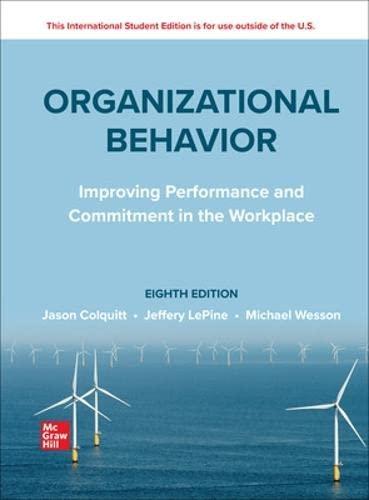Answer each of the following problems. A. A certain town is served by two hospitals. In the
Question:
Answer each of the following problems.
A. A certain town is served by two hospitals. In the larger hospital, about 45 babies are born each day, and in the smaller hospital, about 15 babies are born each day. Although the overall proportion of boys is about 50 percent, the actual proportion at either hospital may be greater or less than 50 percent on any given day. At the end of a year, which hospital will have the greater number of days on which more than 60 percent of the babies born were boys?
a. The large hospital
b. The small hospital
c. Neither—the number of days will be about the same (within 5 percent of each other)
B. Linda is 31 years of age, single, outspoken, and very bright. She majored in philosophy in college. As a student, she was deeply concerned with discrimination and other social issues and participated in antinuclear demonstrations. Which statement is more likely?
a. Linda is a bank teller.
b. Linda is a bank teller and active in the feminist movement.
page 272 C. A cab was involved in a hit-and-run accident. Two cab companies serve the city: the Green, which operates 85 percent of the cabs, and the Blue, which operates the remaining 15 percent. A witness identifies the hit-and-run cab as Blue. When the court tests the reliability of the witness under circumstances similar to those on the night of the accident, the witness correctly identifies the color of the cab 80 percent of the time and misidentifies it the other 20 percent. What’s the probability that the cab involved in the accident was Blue, as the witness stated?
D. Imagine that you face this pair of concurrent decisions. Examine these decisions and then indicate which choices you prefer.
Decision I: Choose between:
a. A sure gain of $240
b. A 25 percent chance of winning $1,000 and a 75 percent chance of winning nothing Decision II: Choose between:
a. A sure loss of $750
b. A 75 percent chance of losing $1,000 and a 25 percent chance of losing nothing Decision III: Choose between:
a. A sure loss of $3,000
b. An 80 percent chance of losing $4,000 and a 20 percent chance of losing nothing E. You’ve decided to see a Broadway play and have bought a $150 ticket.
As you enter the theater, you realize you’ve lost your ticket. You can’t remember the seat number, so you can’t prove to the management that you bought a ticket. Would you spend $150 for a new ticket?
F. You’ve reserved a seat for a Broadway play, for which the ticket price is $150. As you enter the theater to buy your ticket, you discover you’ve lost $150 from your pocket. Would you still buy the ticket?
(Assume you have enough cash left to do so.)
page 273 G. Imagine you have operable lung cancer and must choose between two treatments: surgery and radiation. Of 100 people having surgery, 10 die during the operation, 32 (including those original 10) are dead after one year, and 66 are dead after five years. Of 100 people having radiation therapy, none dies during treatment, 23 are dead after one year, and 78 after five years. Which treatment would you prefer?
Step by Step Answer:

ISE Organizational Behavior Improving Performance And Commitment In The Workplace
ISBN: 9781265049409
8th Edition
Authors: Jason A. Colquitt, Jeffery A. LePine Associate Professor Prof, Michael J. Wesson





